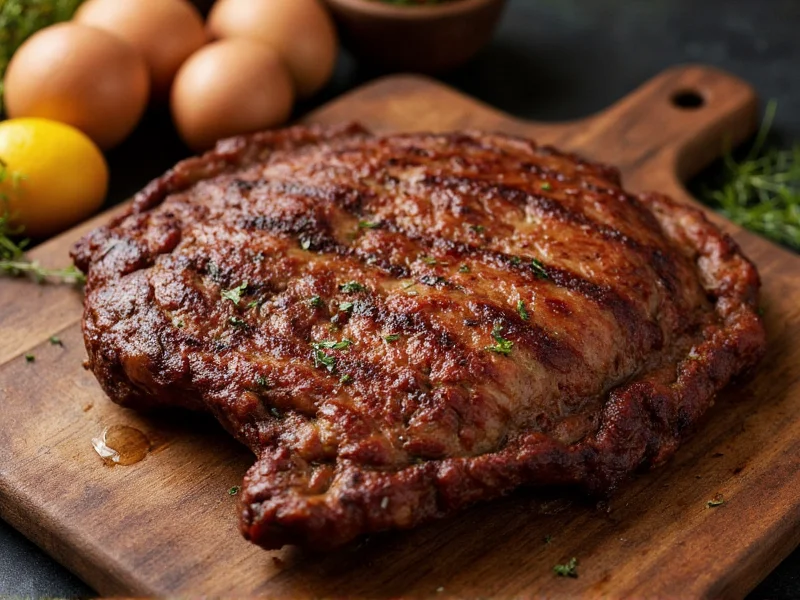Understanding what defines authentic barbacoa requires exploring its historical significance and preparation techniques that have been preserved for centuries. This distinctive cooking method represents one of Mexico's most important culinary traditions, with variations found across different regions of the country and throughout Latin America.
Historical Origins of Barbacoa
The term "barbacoa" derives from the Taíno word "barabicu," referring to a wooden framework used for roasting or drying meat. Spanish colonizers adopted this indigenous Caribbean cooking technique and introduced it to mainland Mexico, where it evolved significantly. Historical records from the 16th century describe how indigenous communities throughout Mesoamerica prepared barbacoa for ceremonial occasions and community gatherings.
Traditional barbacoa preparation involves digging a pit in the ground, heating stones within it, placing marinated meat wrapped in maguey (agave) leaves on top, then covering everything with earth to create an underground oven. The slow cooking process—often lasting 12-15 hours—allows connective tissues to break down completely, producing exceptionally tender meat with distinctive earthy flavors.
Regional Variations Across Mexico
Mexico's diverse regions have developed their own distinctive approaches to barbacoa preparation:
| Region | Primary Meat | Distinguishing Characteristics |
|---|---|---|
| Hidalgo | Sheep head | Considered the birthplace of modern barbacoa; uses maguey leaves exclusively |
| Michoacán | Goat | Often includes pineapple in preparation; served with consommé |
| Jalisco | Beef head | Prepared for special occasions; typically served with tortillas and salsa |
| Yucatán | Whole pig | Known as cochinita pibil; uses achiote paste and sour orange marinade |
Traditional Barbacoa Preparation Process
The authentic barbacoa cooking method follows these essential steps:
- Digging a pit approximately 3-4 feet deep
- Heating volcanic stones in the pit with wood fire
- Removing ashes and placing marinated meat on the hot stones
- Wrapping the meat in maguey leaves to retain moisture and impart flavor
- Covering the entire pit with soil to create a sealed underground oven
- Allowing meat to cook slowly for 12-15 hours
- Unearthing the cooked meat, which should be fall-apart tender
This traditional preparation method creates a distinctive flavor profile that cannot be replicated through conventional cooking techniques. The earthy notes from the maguey leaves and soil, combined with the slow transformation of collagen into gelatin, produce meat with unparalleled tenderness and complexity.
Barbacoa vs. Similar Dishes
Many confuse barbacoa with other slow-cooked meat preparations, but important distinctions exist:
- Barbacoa vs. Carnitas: While both are Mexican slow-cooked meats, carnitas are prepared by simmering pork in its own fat (confit method), whereas traditional barbacoa uses underground pit cooking.
- Barbacoa vs. Birria: Birria is a stewed meat dish often made from the same cuts used in barbacoa, but prepared above ground with a distinctive red chile broth.
- Barbacoa vs. American BBQ: Despite the similar name, American barbecue typically involves smoking meat over indirect heat with wood smoke, while authentic barbacoa relies on steam and radiant heat from underground.
Modern Interpretations and Popularity
While traditional pit-cooked barbacoa remains a specialty in Mexican communities, modern adaptations have increased its global popularity. Many restaurants now use conventional ovens or slow cookers to approximate the traditional method, though purists argue these lack the distinctive earthy flavor of authentic preparation.
The rise of Mexican food chains like Chipotle has introduced barbacoa to international audiences, though their version (typically shredded beef shoulder cooked with chipotle peppers) differs significantly from traditional preparations. Food enthusiasts seeking authentic barbacoa often travel to central Mexico, particularly the state of Hidalgo, where weekly barbacoa markets showcase this culinary tradition.
Cultural Significance and Contemporary Practice
Barbacoa represents more than just a cooking method—it's a cultural tradition that brings communities together. In many Mexican towns, barbacoa preparation remains a communal activity, often undertaken early Sunday morning with families gathering to unearth and share the cooked meat.
UNESCO has recognized Mexican cuisine, including traditional cooking methods like barbacoa, as an Intangible Cultural Heritage of Humanity. This designation highlights the importance of preserving these culinary traditions for future generations. Despite modernization, many communities continue practicing traditional barbacoa preparation, maintaining a direct link to pre-Hispanic cooking techniques.











 浙公网安备
33010002000092号
浙公网安备
33010002000092号 浙B2-20120091-4
浙B2-20120091-4